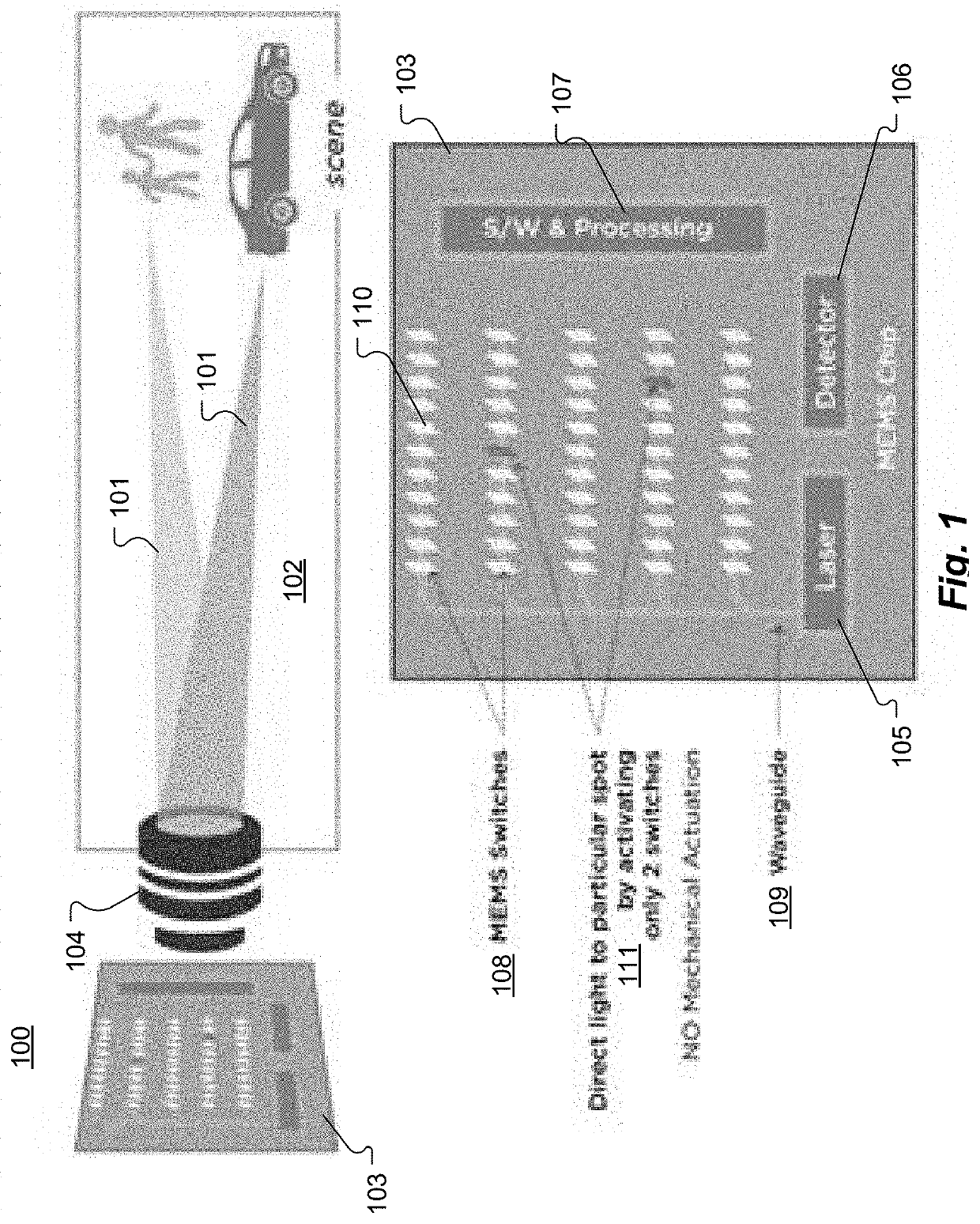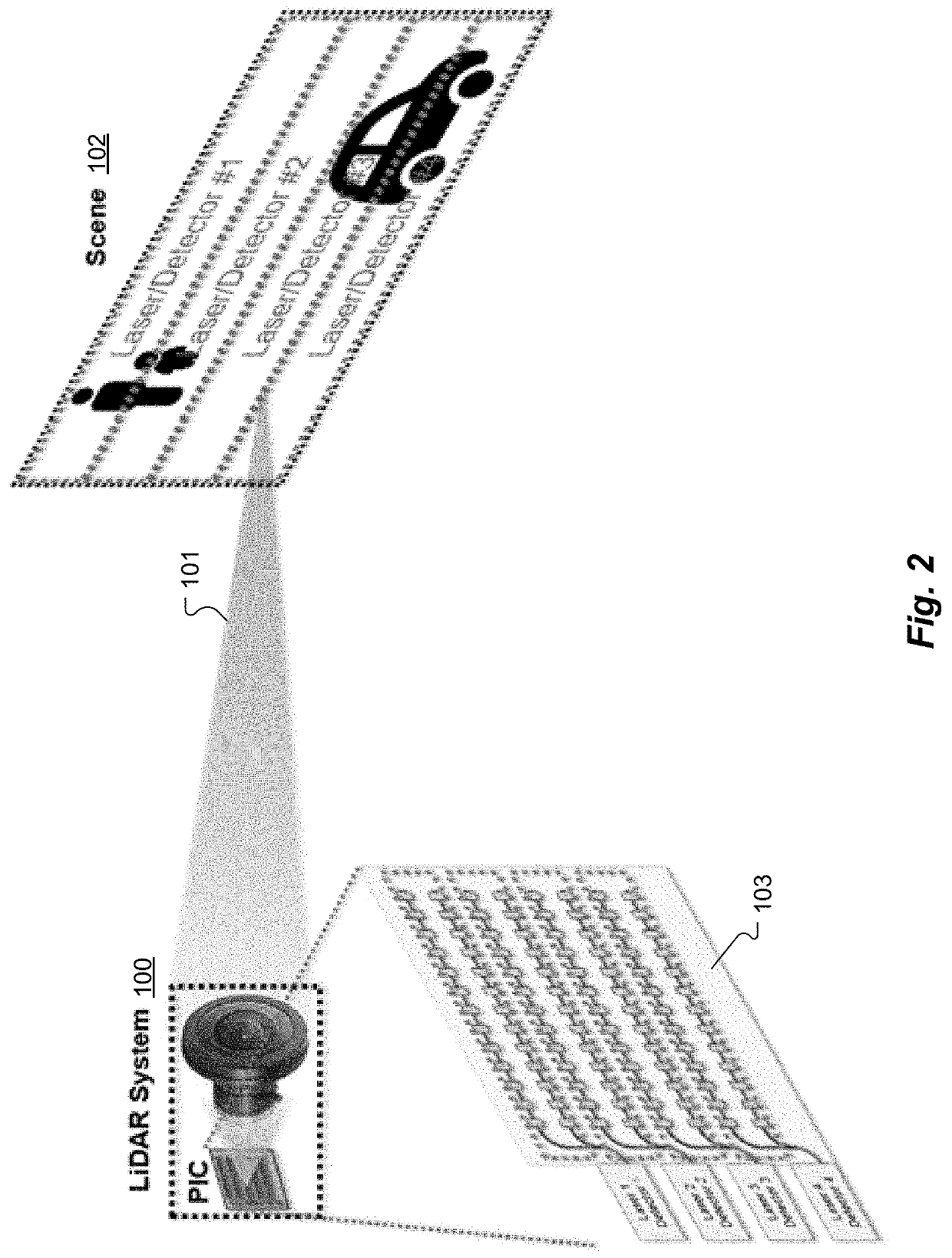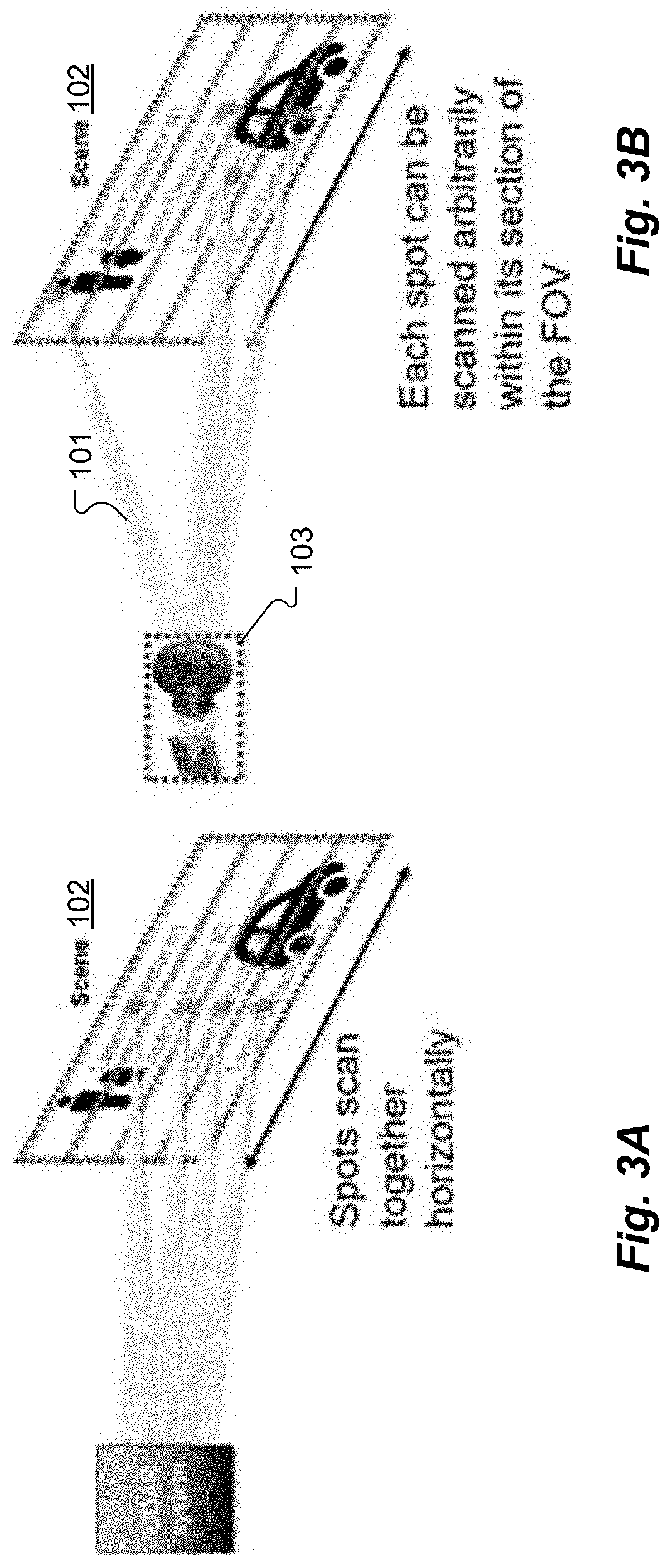Beam Scanning Methods for Improved Eye Safety in LiDAR Systems
a beam scanning and lidar technology, applied in the field of lidar (light detection and ranging) systems, can solve problems such as increasing the risk of laser exposure in the scen
- Summary
- Abstract
- Description
- Claims
- Application Information
AI Technical Summary
Benefits of technology
Problems solved by technology
Method used
Image
Examples
Embodiment Construction
[0022]Various embodiments of the present invention are directed to a LiDAR system that dynamically varies a temporal pattern for routing light from a laser through an optical switching network to a sequence of optical emitters while avoiding potential eye injury.
[0023]FIG. 1 shows an overview figure of a LiDAR system 100 according to one embodiment of the present invention that can be configured to emit one or more laser light beams 101 to scan a scene 102 (field of view). The optical circuit includes a photonic integrated circuit (PIC) 103, a lens 104, one or more laser(s) 105, one or more detector(s) 106 and control electronics 107. Light from the laser 105 is coupled into the photonic integrated circuit (PIC) 103 where a series of two or more MEMS switches 108 defines where on the PIC 103 the laser light is emitted. The first MEMS switch 108 may include a MEMS switchable overpass waveguide 109 that couples light from a bus waveguide to a row of optical grating switches 110. An al...
PUM
 Login to View More
Login to View More Abstract
Description
Claims
Application Information
 Login to View More
Login to View More - R&D
- Intellectual Property
- Life Sciences
- Materials
- Tech Scout
- Unparalleled Data Quality
- Higher Quality Content
- 60% Fewer Hallucinations
Browse by: Latest US Patents, China's latest patents, Technical Efficacy Thesaurus, Application Domain, Technology Topic, Popular Technical Reports.
© 2025 PatSnap. All rights reserved.Legal|Privacy policy|Modern Slavery Act Transparency Statement|Sitemap|About US| Contact US: help@patsnap.com



